Dear students
Office of Vice Dean for Student & Cultural Affairs will hold a one - day trip to Kashan and Qamsar for boys and girls.
Boys
Registration Days: ( Saturday May,6th 2017) ( Sunday, May 7th,2017)
Departure Date: (Thursday, May 11th ,2017)
Time of Departure: around 5:00 a.m. (The exact time will be announced via message)
Time of Arrival: around 11:00 p.m.
Tour Capacity: 35 students
Girls
Registration Days: Saturday May,6th 2017 till Tuesday , May 9th ,2017 (Saturday.Sunday.Monday)
Departure Date: (Thursday, May 18th ,2017)
Time of Departure: around 5:00 p.m. (The exact time will be announced via message)
Time of Arrival: around 11:00 p.m.
Tour Capacity: 35 students
Steps of Registration:
.1Presence at office of Vice Dean for Students and Cultural Affairs
(Address: Number 124, Third floor, Mozafar Alley, Dameshgh Street. Southern Felestine Street.
2. The following items will be checked by the officer of student and cultural affairs in advance of registration.
Medical Test and Vaccination Result
Bank Account Number
3. Fill out the registration form
4. Pay the fee (20,000 Toman)
5. Obtain a receipt
-
Notice to the following information about Kashan and Qamsar tour.
-
Tour will be held just for singles in two different groups. (Boys and Girls)
-
Meals: Breakfast, Lunch, Dinner
-
Transportation: By bus
-
If enrolled students won’t participate in that tour, students affairs can’t refund their payment.
-
Participants shouldn’t have class during the time of a trip.If the tour according to the unexpected situations is going to be cancelled we will inform you via message.
-
Required documents that you have to carry during the trip :
1. Student ID Card (Temporary or Permanent)
2. Copy of Your Passport
Further information about the tours will be mentioned by message. (Check your cellphone number with Mrs Pourkazemi that your cellphone number receive advertisement message or not)
For More Information you can contact us with:
(021)(88893976)
-
Places that you will visit during this trip:
1. Birds’ Garden in Qamsar


.jpg)
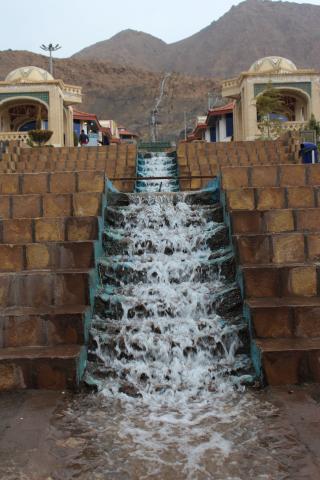
2. Rose Water Distillation at distilling workshop
-
Steps of Rose Distillation
1. A copper pot with a capacity of 120-150 liters;
2. A big clay pot, which has not been replaced by the copper pot and is used to cover the pot. A major advantage of clay pot was that it did not burn the fragrance of the flower
3. A copper pitcher with handle and a capacity of about 30-40 liters which is put in cold water, so that flower streams are turned into liquid;
4. Four wooden canes which are attached to each other to connect the pot to the pitcher; today, they use aluminum pipes instead of those canes
5. A water pool where liquefaction is done
6. Heating equipment under the copper pot which is usually fed by oil or diesel fuel. In the past they used wood and bushes to warm it up.
First the copper pot is put on an oven made from bricks and cement or stones and mud. The heating agent is put below it. Then up to 30 kg of rose petals are poured into the pot and 80 liters of water is added. The pot is then covered and a heavy weight is put over it to control steam pressure. Probable holes and cracks are covered with a mortar made of the remnants of boil flowers and bread dough to prevent loss of steam. Instead of weight and dough, they use elastic washers, screws and levers. The copper pitcher is put into the water and is kept in place by a ladder, or more recently, by cast iron pipes, so that, it will not rise to the surface of the water. Then canes or aluminum pipes are inserted into the pot, on the one side, and into the pitcher, on the other side and they wrap it in a piece of fabric with a cotton ball, so that, water would not penetrate into the pitcher. Water or any other foreign object will ruin the rose water. Now, everything is ready. They kindle the oven to boil the pot. At that time, rose water and water steam progress in the pipe as far as the angle. From there, rose water steam continues toward the pitcher and is liquidated due to low temperature of environment. It takes about 4 hours before a pitcher full of rose water (40 liters) is obtained. When they pour the rose water into the bottle, they wait for it to cool down. Then they rub some oil on the bottle. The waste collected at the bottom of the pot, which is called “bongol”, is used to feed livestock and is also dried to be used as fuel in winter or as fertilizer for gardens. During the whole process, the flame should be steady and mild. In better words, the longer the distillation period and the steadier the flame, the higher would be quality of the end product. The water poured into the pot should be measured accurately to be proportionate to the weight of flower petals.
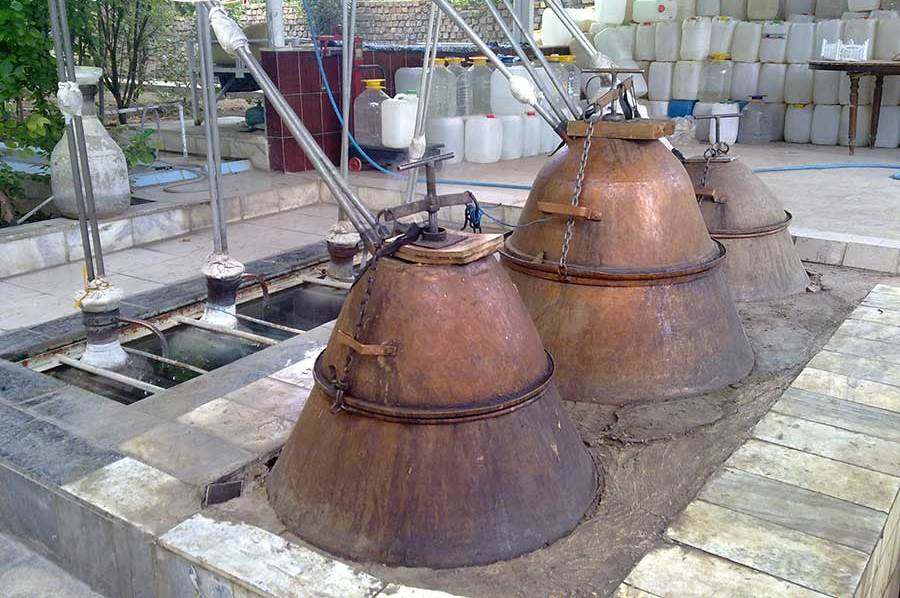
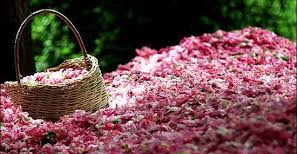
3. Visiting Fin Garden
The origins of the garden may be anterior to the Safavid period. The garden was developed further during the Safavid dynasty, until Abbas II of Persia It was highly recognized during the reign of Fat′h Ali Shah Qajar and was considerably expanded. The garden subsequently suffered from neglect and was damaged several times until, in 1935, it was listed as a national property of Iran. On 2007, 8 September, Bagh-e Fin was submitted to the Unesco's Tentative List. In 2012 Unesco declared the garden a World Heritage Site. Fin garden covers 2.3 hectares with a main yard surrounded by ramparts with four circular towers. In keeping with many of the Persian gardens of this era, the Fin Garden employs a great many water features. These were fed from a spring on a hillside behind the garden, and the water pressure was such that a large number of circulating pools and fountains could be constructed without the need for mechanical pumps.The garden contains numerous cypress trees and combines architectural features of the Safavid, Zandiyeh and Qajar periods.
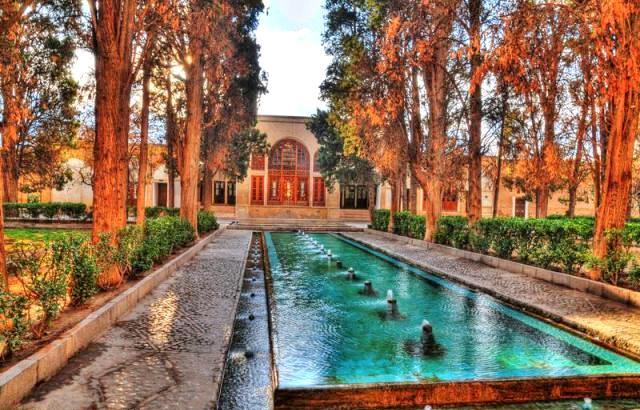
4. Borujerdis House
The Borujerdi House is a historic house in Kashan, Iran. The house was built in 1857 by architect Ustad Ali Maryam, for the wife of Seyyed Mehdi Borujerdi, a wealthy merchant. It consists of a rectangular beautiful courtyard, delightful wall paintings by the royal painter Sani ol molk, and three 40 meter tall wind towers which help cool the house to unusually cool temperatures. It has 3 entrances, and all the classic signatures of traditional Persian residential architecture, such as a exterior yard and an interior yard. The house took eighteen years to build using 150 craftsmen.
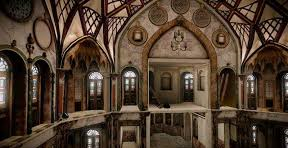
.jpg)